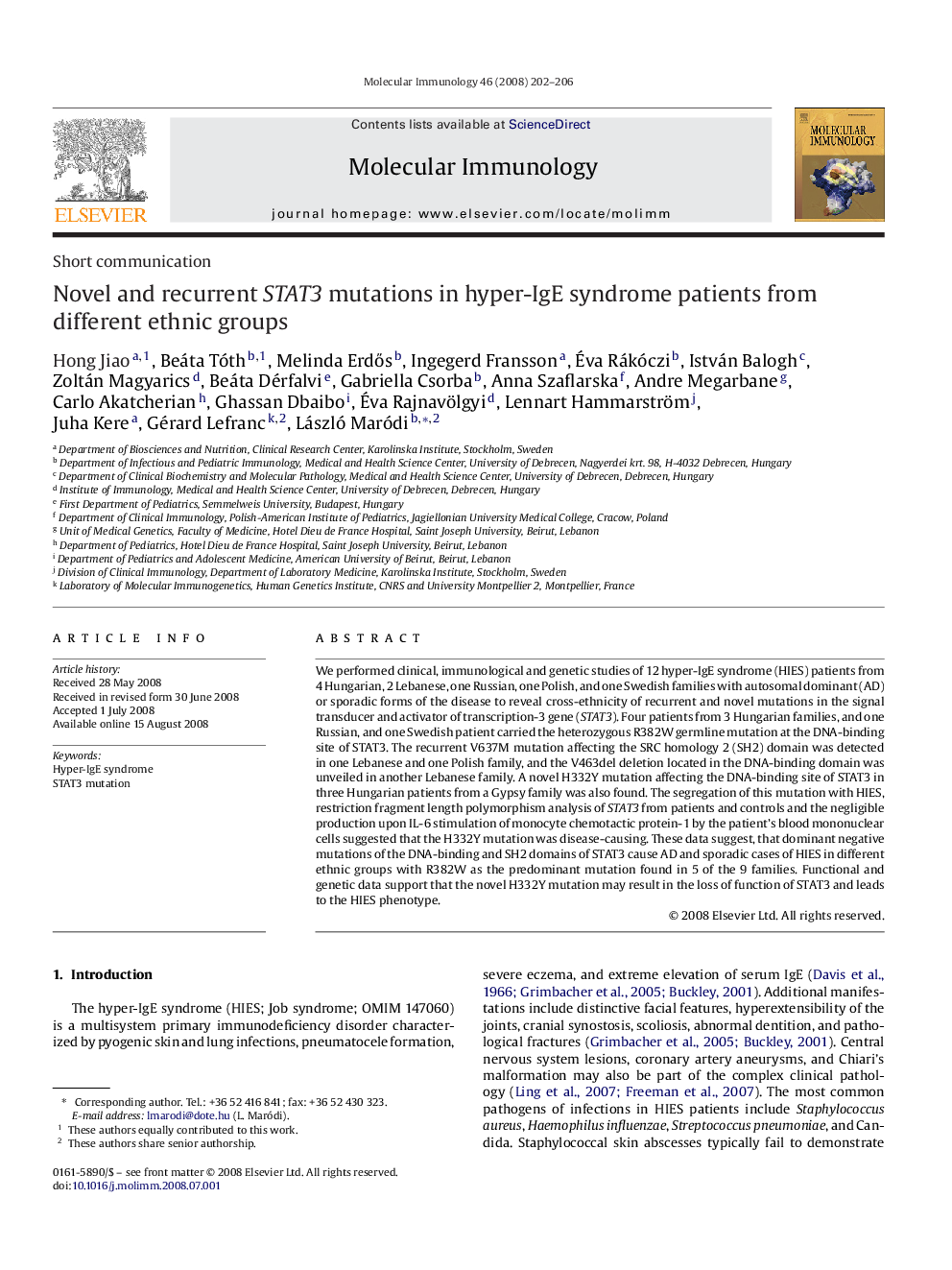| Article ID | Journal | Published Year | Pages | File Type |
|---|---|---|---|---|
| 2832735 | Molecular Immunology | 2008 | 5 Pages |
We performed clinical, immunological and genetic studies of 12 hyper-IgE syndrome (HIES) patients from 4 Hungarian, 2 Lebanese, one Russian, one Polish, and one Swedish families with autosomal dominant (AD) or sporadic forms of the disease to reveal cross-ethnicity of recurrent and novel mutations in the signal transducer and activator of transcription-3 gene (STAT3). Four patients from 3 Hungarian families, and one Russian, and one Swedish patient carried the heterozygous R382W germline mutation at the DNA-binding site of STAT3. The recurrent V637M mutation affecting the SRC homology 2 (SH2) domain was detected in one Lebanese and one Polish family, and the V463del deletion located in the DNA-binding domain was unveiled in another Lebanese family. A novel H332Y mutation affecting the DNA-binding site of STAT3 in three Hungarian patients from a Gypsy family was also found. The segregation of this mutation with HIES, restriction fragment length polymorphism analysis of STAT3 from patients and controls and the negligible production upon IL-6 stimulation of monocyte chemotactic protein-1 by the patient's blood mononuclear cells suggested that the H332Y mutation was disease-causing. These data suggest, that dominant negative mutations of the DNA-binding and SH2 domains of STAT3 cause AD and sporadic cases of HIES in different ethnic groups with R382W as the predominant mutation found in 5 of the 9 families. Functional and genetic data support that the novel H332Y mutation may result in the loss of function of STAT3 and leads to the HIES phenotype.
